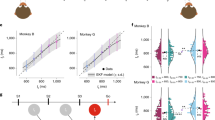Abstract
PERHAPS the following brief description of the integrator devised by me will suffice to establish its near kinship with Mr. Wilson's (NATURE, vol. xxiv. pp. 467 and 557):—A roller with a spherical edge is made to revolve with a velocity proportional to that of the wind as recorded on an anemogram. This roller presses on a plane table carried by two mutually perpendicular pairs of rails in planes parallel to that of the table. The lowest of the pairs of rails is supported by a frame carried on the extremity of a vertical shaft. The point of contact of the roller with the table lies in the prolongation of the axis of the shaft. The table can rotate with the shaft, but not independently. By a simple arrangement the shaft, and consequently the table, are caused to take up positions corresponding from moment to moment with the direction of the wind record on the anemogram. A style concentric with the shaft presses lightly against a compound sheet of tracing and carbonised paper attached to the under side of the table. Arrangements are also made for obtaining the sum of the movements of the table toward each of the four cardinal points. If the roller be moved with a velocity proportional to that of the wind, whether directly by a cup-anemometer or by a mechanical translation of the trace as given by such an instrument, while the table simultaneously assumes orientations corresponding to the direction of movement of the air, the line drawn by the style will be a miniature copy of the path of an imaginary particle animated by the movements actually belonging to the masses of air which successively affect the anemometer at the given station during the selected period, rigorously in accordance with the principle known as Lambert's. But in order that the trace drawn as described should correctly represent the actual movements of the air, it is evident that the whole mass of the atmosphere must be supposed to move “parallel to itself”, i.e. in such a manner that the straight line joining any two particles of air shall always be parallel to its original direction, an assumption which is manifestly incorrect. If I rightly understand the description of Mr. Wilson's integrator on p. 467, the trace given by it is precisely that which has just been shown in the case of my own machine to be based on a fallacious assumption. But though the trace may be useless, the summation of the movements of the table above described gives results which are representative of physical realities, being in fact the quadrantal components of the wind-movement at the station during the period dealt with by the machine. I trust that the preceding remarks will suffice to justify the statements contained in my last letter. Dr. von Oettingen's remark, referred to in my concluding sentence, related, not to his wind-component-integrator, but to the continual change of form in what may be called the physical Lambert's line, and implied the consequent advisability of discarding Lambert's method of treatment.
This is a preview of subscription content, access via your institution
Access options
Subscribe to this journal
Receive 51 print issues and online access
$199.00 per year
only $3.90 per issue
Buy this article
- Purchase on Springer Link
- Instant access to full article PDF
Prices may be subject to local taxes which are calculated during checkout
Similar content being viewed by others
Author information
Authors and Affiliations
Rights and permissions
About this article
Cite this article
BURTON, C. Integrating Anemometer. Nature 24, 582–583 (1881). https://doi.org/10.1038/024582b0
Issue Date:
DOI: https://doi.org/10.1038/024582b0
Comments
By submitting a comment you agree to abide by our Terms and Community Guidelines. If you find something abusive or that does not comply with our terms or guidelines please flag it as inappropriate.



